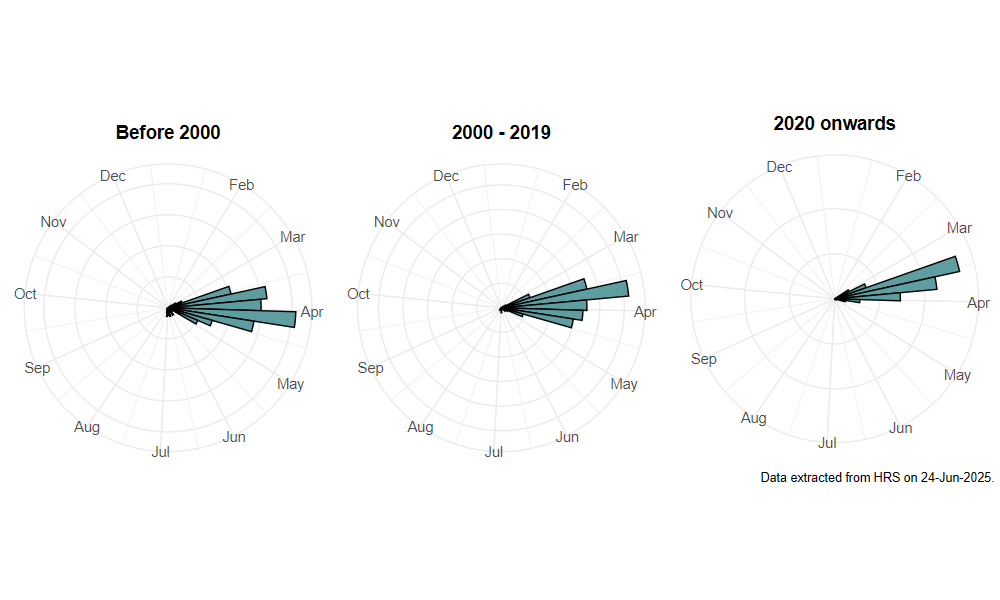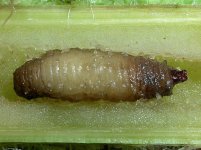Cheilosia grossa (Fallén, 1817)
Identification
Identification difficulty = 2. ![]()
![]() according to Ball & Morris, 20241
according to Ball & Morris, 20241
Synonymy
Cheilosia corydon (Harris, 1776).
Biology
The larva tunnels the stems and roots of a wide range of thistles (Cirsium and Carduus spp.), especially Marsh Thistle Cirsium palustre, which then tend to become stunted and multi-stemmed. Females oviposit on small, young, flowering spikes growing from the centre of the rosette. Adults are found visiting flowers such as Salix catkins in the early spring, usually in sheltered situations such as woodland rides or edges. Males typically hover at considerable height.
Flight period
The following plots show the number of unique records per week excluding those reported to be of immature stages.

Distribution
Adult records are scarce, probably because this early-flying species is missed by recorders, but also because individuals tend to fly high and out of reach. The best way to record this species is to look for larvae which occur in the base between the roots and the stem. Recording in this way has shown that this species is widely distributed across the uplands in England and Scotland, but is less common in Wales and south western England.

Trends
The following plots show the Frescalo TFactor vs year and a map of the rescaled frequency (all records) for the species.
-
Ball, S., & Morris, R. (2024). Hoverflies of Britain and Ireland. WILDGuides (3rd ed.). Oxford: Princeton University Press. ↩
